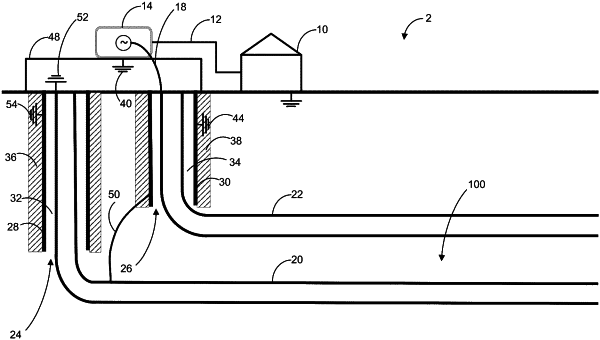| CPC E21B 43/2401 (2013.01) [E21B 36/04 (2013.01); E21B 43/2408 (2013.01); H05B 6/46 (2013.01); H05B 6/50 (2013.01); H05B 6/52 (2013.01); H05B 6/62 (2013.01); H05B 2214/03 (2013.01)] | 23 Claims |

|
1. An apparatus for electromagnetic heating of a hydrocarbon formation, the apparatus comprising:
an electrical power source;
at least one electromagnetic power source for generating at least a first and a second time-varying current or voltage, each of the first and the second time-varying current or voltage; the at least one electromagnetic power source being powered by the electrical power source;
at least a first and a second transmission line coupled to the at least one electromagnetic power source, each of the first and the second transmission lines having at least a first and a second transmission line conductor, each of the first and the second transmission line conductors of the first and the second transmission lines having a proximal end and a distal end, the first and the second transmission line conductors of the first and the second transmission lines being excitable by the first and the second time-varying current or voltage to propagate electromagnetic waves from the proximal ends of the transmission line conductors toward the distal ends of the transmission line conductors within the hydrocarbon formation.
|